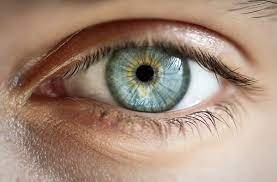Vitiligo is a chronic skin disorder characterized by the loss of skin color in patches, resulting from the destruction of melanocytes – the cells responsible for producing skin pigment. While there is no cure for vitiligo, medical advancements have led to treatments that can help manage the condition. One such innovative treatment is the use of JAK inhibitors. In this guide, we will delve into the world of JAK inhibitors, discussing what they are, how they work, their benefits, potential side effects, and more.
Understanding Vitiligo
What is Vitiligo?
Vitiligo is a dermatological condition that affects millions worldwide. It manifests as white patches on the skin due to the loss of melanin, which gives color to the skin, hair, and eyes. The exact cause of vitiligo is complex and multifaceted, involving both genetic and environmental factors.
Impact on Mental Health
The visible nature of vitiligo can significantly impact an individual’s self-esteem and mental well-being. The social stigma associated with visible skin differences underscores the need for effective treatments.
Introducing JAK Inhibitors
What are JAK Inhibitors?
Janus kinase (JAK) inhibitors are a class of drugs initially developed to treat inflammatory conditions such as rheumatoid arthritis. They work by targeting specific enzymes that play a crucial role in the inflammatory process.
Application in Vitiligo
Researchers discovered that JAK inhibitors could have a positive impact on vitiligo treatment by curbing the immune response responsible for attacking melanocytes. This discovery paved the way for exploring their effectiveness in managing vitiligo.
The Benefits of JAK Inhibitors
Halting Disease Progression
JAK inhibitors have shown promising results in halting the progression of vitiligo. By suppressing the immune response that attacks melanocytes, these inhibitors can potentially prevent the condition from spreading to new areas.
Stimulating Pigment Regrowth
Another remarkable benefit is the stimulation of pigment regrowth in affected areas. JAK inhibitors appear to coax dormant melanocytes back into action, allowing the repigmentation of the skin.
Considerations and Side Effects
Potential Side Effects
Like any medication, JAK inhibitors come with potential side effects. These can include headaches, nausea, upper respiratory tract infections, and changes in blood cell counts. It’s crucial for patients to discuss these potential side effects with their healthcare provider.
Monitoring and Adjustments
Regular check-ups and communication with a dermatologist are essential while undergoing JAK inhibitor treatment. Adjustments to the medication dosage might be necessary to strike a balance between effectiveness and minimizing side effects.
Is JAK Inhibition Right for You?
Patient Suitability
Not everyone with vitiligo is an ideal candidate for JAK inhibitor treatment. Factors such as age, overall health, and the extent of the condition play a role in determining the suitability of this treatment option.
Consultation with a Dermatologist
Consulting with a dermatologist is the first step towards exploring JAK inhibitor treatment. A medical professional can assess the patient’s individual situation and recommend the most suitable approach.
Conclusion
In the quest for effective vitiligo treatment, JAK inhibitors have emerged as a promising option. Their ability to regulate the immune response and stimulate pigment regrowth offers hope to individuals battling this challenging condition. However, each patient’s journey is unique, and consulting with a healthcare provider remains paramount to making informed treatment decisions.








